What Does Rye Do For A Garden
When it comes to planting a fall cover crop in your garden, it's hard to beat the incredible benefits of annual rye.
Cover crops are the single best method for recharging your garden's soil each fall. Not only do they provide valuable nutrients back to the soil, they also protect a garden from erosion and weeds.
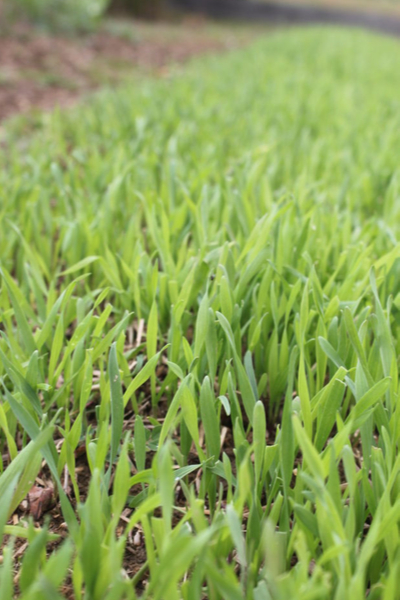
And although there are a lot of great choices when it comes to selecting a fall cover crop, for us, there is one that stands far above the rest. And that, of course, is annual rye!
Not only is annual rye extremely effective in providing nutrients back to the soil, it's also easy to plant and maintain. Even better, it also allows us to never have to till our soil.
And as you will see in the article and video below – that single fact makes gardening easier than ever. Especially when you consider using annual rye now nearly eliminates next year's weeds!
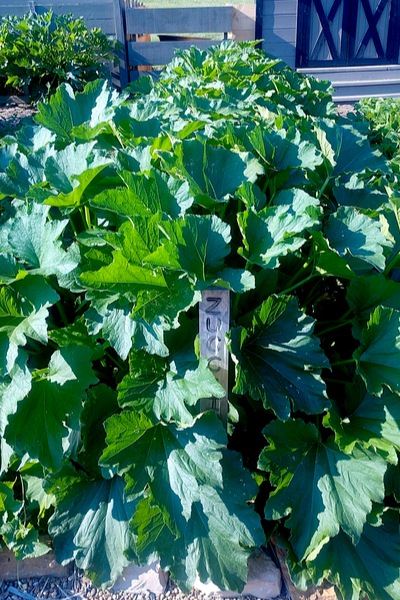
Here is a look at how annual rye works, how to plant it this fall – and how it can turn your growing space into a low-maintenance, high-producing no-till garden!
The Power of Planting Annual Rye
Annual rye is simply an incredible workhorse in the garden.
For starters, it has an ultra-thick root system that grows deep into the soil below. Even into clay and heavily compacted soils. And as the roots grow, they break up that hard soil with ease.
But those roots do so much more than simply loosen tough soil. The root ends also contain tiny nodules that help to "fix" nitrogen levels in the soil. And when it comes to growing vegetables, nitrogen is a major player!
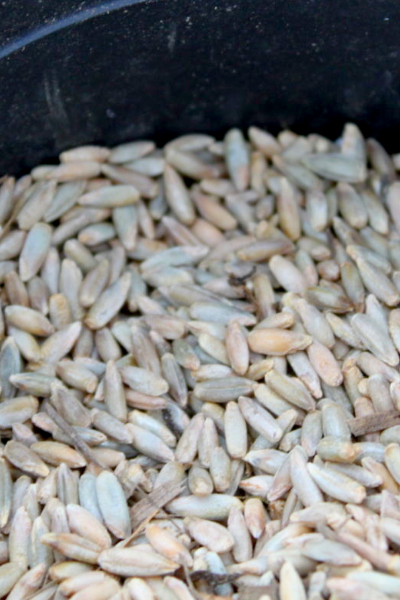
But the benefits don't even stop there. As the cover crop dies back in the spring, all of the clippings, roots and stems break down into the soil. What is left behind are tiny channels in the soil now overflowing with rich humus.
And these channels are vital in allowing air, water and nutrients to find their way to your vegetable plants. All of which of course leads to healthier, stronger crops, year after year.
Getting Rid Of Weeds For Good – Planting Annual Rye
As if the above-mentioned benefits weren't enough, annual rye is also a major player in reducing your garden's weeds. And when we say major, we mean MAJOR!
Annual rye creates a thick barrier of living vegetation as it grows. One that snuffs out existing weeds, and keeps new weeds seeds from ever finding a home in bare soil.
And since you don't need to till it under, those weeds never ever find a home to sprout next year. It is one of the major reasons we spend little time ever weeding our garden – and one we are quite thankful for! See : How To Create A No-Till Raised Row Garden
Here is a look at how and when we plant our annual rye cover crop in our garden:
The Never-Till Method Of Cover Cropping With Annual Rye
In mid to late fall, as our vegetable plants begin to fade, we clear our growing rows to plant our annual rye cover crop. All you will need is a simple tine rake, and of course, annual rye seed.
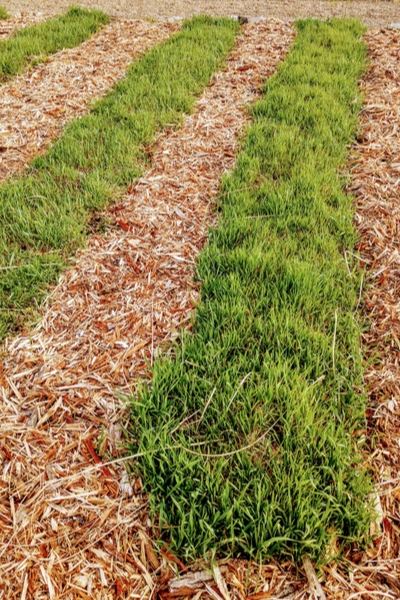
To begin, we rake each row to slightly scratch the soil surface. Next we spread seeds on the row as if we were planting grass seed. We then gently rake the soil to help set the seed a bit.
There is no need at this point to full cover the seed, just light rake over. Finally, we finish by covering with a light 1/2 covering of straw to keep the birds away – and our work is done!
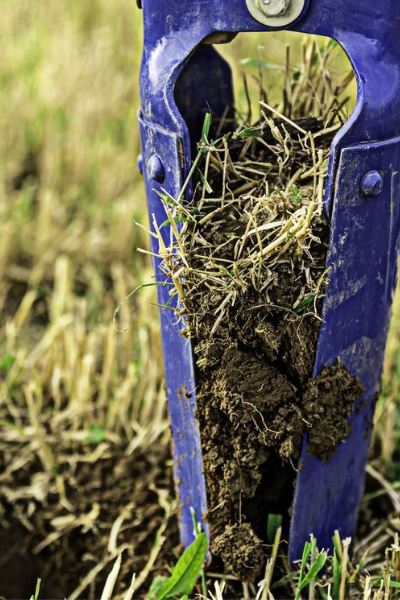
Within 7 days, the rye starts to poke its bright green blades through the surface. Within a few weeks, the raised growing rows are completely covered in a thick mass of bright green turf.
Winter Dormancy
As the cold sets in, the rye goes into a dormancy stage. Then, when spring returns, the rye does as well. As it grows in early March, we begin to mow it off every week or two.
The clippings are either mulched into the beds to add organic matter, or we bag them to put in our compost bin. After a few mowings, the rye begins to die off.
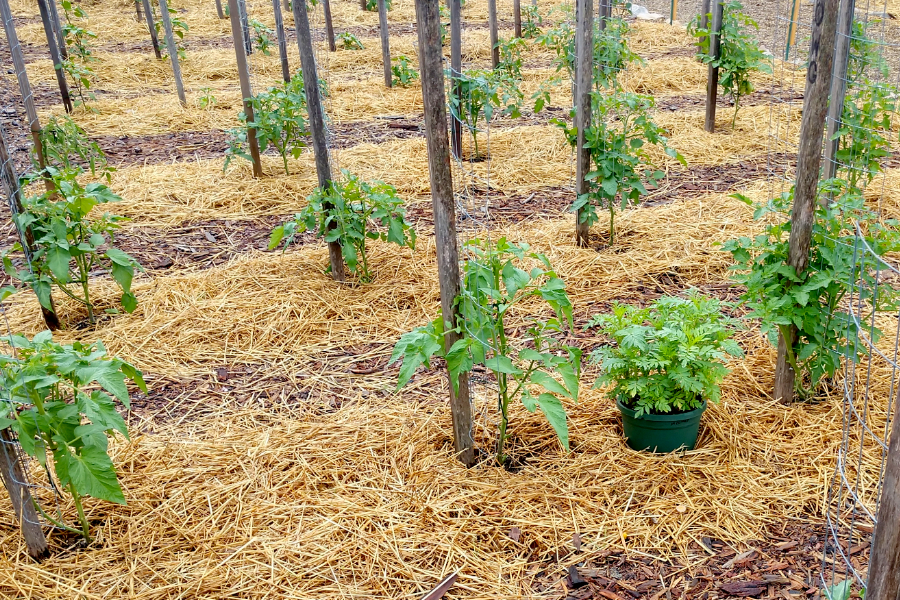
We then plant right through the surface. No tilling. No weeds to remove or worry about. And most important of all, the ground has been re-energized by the winter rye. It truly is the easiest gardening cycle you could ever ask for!
Making Sure You Are Planting The "Right" Annual Rye
Annual rye can go by many names, including winter rye and cereal rye. But it's important to make sure you are buying the right seed when using as a no-till cover crop.
Annual rye is a cereal grain, not a grass. It is not to be confused with perennial or annual rye grass. The seed of annual rye is much larger than that of rye grass. You can usually find it at most feed or grain stores, on line, or at many local gardening centers. Product Link : Winter (Cereal) Rye
Here is to planting annual rye in your garden this year, and to a more productive garden next year! Happy Gardening – Jim and Mary.
As always, feel free to email us at thefarm@owgarden.com with comments, questions, or to simply say hello! To receive our 3 Home, Garden, Recipe and Simple Life articles each week, sign up for our free email list that is located in the middle of this article. This article may contain affiliate links.


What Does Rye Do For A Garden
Source: https://oldworldgardenfarms.com/2020/09/10/plant-annual-rye-cover-crop/
Posted by: glassponot1968.blogspot.com

0 Response to "What Does Rye Do For A Garden"
Post a Comment